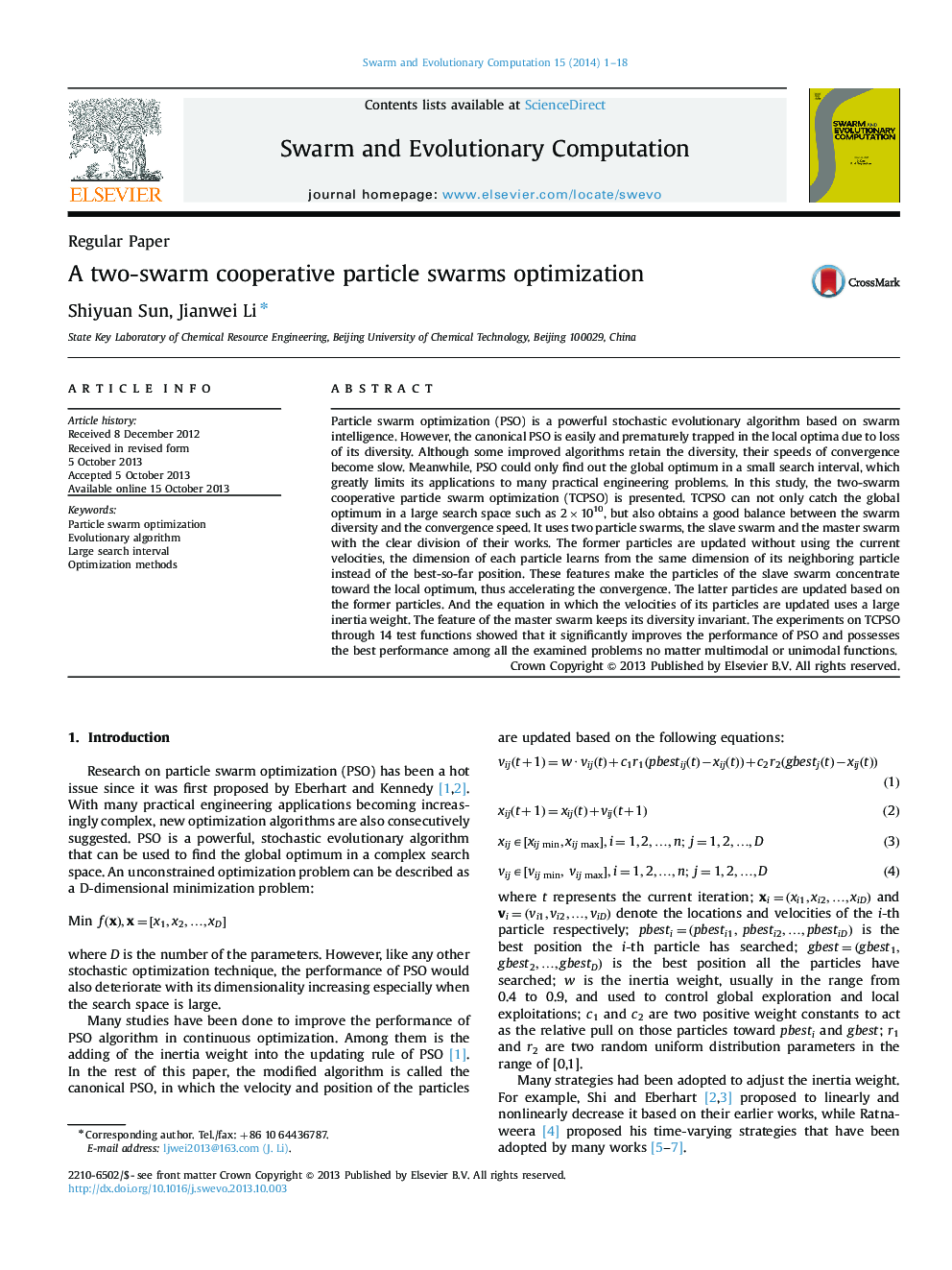| Article ID | Journal | Published Year | Pages | File Type |
|---|---|---|---|---|
| 493690 | Swarm and Evolutionary Computation | 2014 | 18 Pages |
•Particle swarms optimization use two swarms: the slave swarm and the master swarm.•The slave swarm concentrates round the local optimum and converges at a fast speed.•The master swarm distributes on the searching interval randomly to remain the diversity.•The algorithm has a global search capability on a large searching interval.•The algorithm is easy to implement and finishing a loop is very quick.
Particle swarm optimization (PSO) is a powerful stochastic evolutionary algorithm based on swarm intelligence. However, the canonical PSO is easily and prematurely trapped in the local optima due to loss of its diversity. Although some improved algorithms retain the diversity, their speeds of convergence become slow. Meanwhile, PSO could only find out the global optimum in a small search interval, which greatly limits its applications to many practical engineering problems. In this study, the two-swarm cooperative particle swarm optimization (TCPSO) is presented. TCPSO can not only catch the global optimum in a large search space such as 2×1010, but also obtains a good balance between the swarm diversity and the convergence speed. It uses two particle swarms, the slave swarm and the master swarm with the clear division of their works. The former particles are updated without using the current velocities, the dimension of each particle learns from the same dimension of its neighboring particle instead of the best-so-far position. These features make the particles of the slave swarm concentrate toward the local optimum, thus accelerating the convergence. The latter particles are updated based on the former particles. And the equation in which the velocities of its particles are updated uses a large inertia weight. The feature of the master swarm keeps its diversity invariant. The experiments on TCPSO through 14 test functions showed that it significantly improves the performance of PSO and possesses the best performance among all the examined problems no matter multimodal or unimodal functions.
